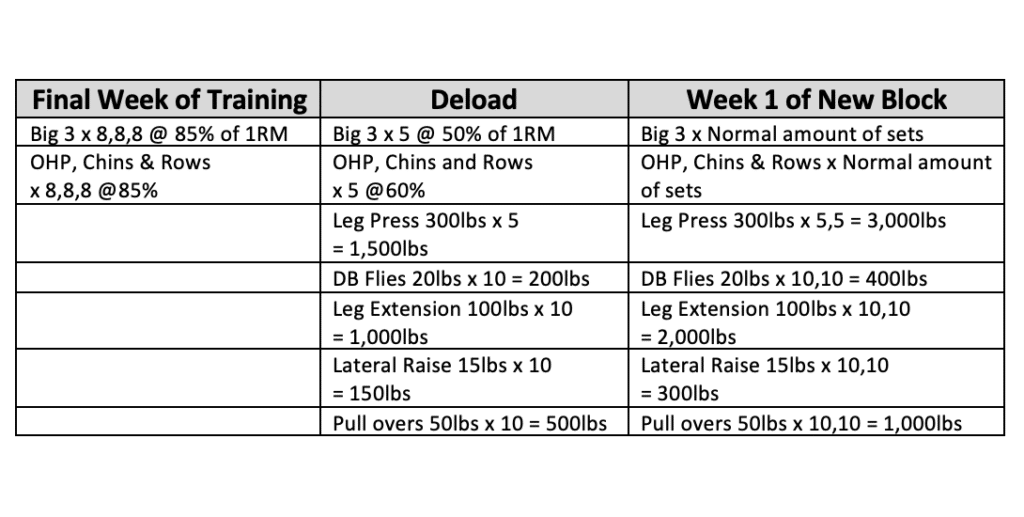
The Art of the Deload: Why Lifting Less Leads to Lifting More
In the relentless pursuit of strength, the idea of intentionally lifting less seems counterintuitive. Lifters often fear that taking a lighter week will kill their momentum and erase their hard-won gains. But the truth is, the deload week is one of the most powerful tools in a smart lifter's arsenal. It's not a sign of weakness; it's a strategic retreat that allows your body to recover, adapt, and come back stronger than ever.

The Science of Getting Stronger: Stress, Recovery, Adaptation
To understand why a deload is necessary, you need to understand the fundamental process of building strength, often called the General Adaptation Syndrome (GAS).
-
Stress: Your training session applies a stress to your body, causing muscle damage and fatigue.
-
Recovery: After the stress, your body works to repair the damage and replenish its energy stores.
-
Adaptation (Supercompensation): If given adequate recovery, your body doesn't just return to its previous state; it adapts and becomes slightly stronger and more resilient to handle a similar stress in the future.
The problem is that heavy training creates a huge amount of fatigue that can accumulate over weeks. Eventually, this accumulated fatigue outpaces your ability to recover, adaptation stalls, and performance drops. The deload's purpose is to drastically reduce the stress (training), allowing fatigue to dissipate so that adaptation (supercompensation) can finally occur.
Signs You Desperately Need a Deload
While smart programs build deloads in proactively, you might need a reactive deload if you experience these signs:
-
Persistent Fatigue: You feel constantly tired, unmotivated to train, and your warm-ups feel heavy.
-
Stalled or Regressing Lifts: You're stuck at the same weights for weeks, or worse, your strength is actually decreasing.
-
Achy Joints and Nagging Pains: Minor aches in your elbows, knees, or shoulders that just won't go away are a classic sign of accumulated stress.
-
Poor Sleep and Irritability: Overtraining can disrupt your nervous system, affecting sleep quality and mood.
-
Lack of Excitement for Training: If you start to dread going to the gym, your body is sending you a clear signal.
How to Execute a Perfect Deload
A deload is not a full week off from the gym (though that can be useful in cases of extreme burnout). It's a period of active recovery. The goal is to maintain movement patterns without inducing significant stress.
-
The Basic Formula:
-
Reduce Volume: Drastically cut your number of sets and/or reps. A common method is to perform only your main lifts for 2-3 sets of 3-5 reps.
-
Reduce Intensity: Significantly lower the weight on the bar. A good starting point is 50-60% of your one-rep max (1RM).
-
Eliminate Failure: No grinding reps. Every lift should feel fast and snappy (RPE 5-6).
-
Cut Back Accessories: Reduce or eliminate most of your accessory work for the week.
-
-
Sample Deload Squat Session:
-
Normal Workout: 5 sets of 5 reps at 180kg.
-
Deload Workout: 3 sets of 3 reps at 100kg.
-
The goal is to leave the gym feeling refreshed and better than when you walked in.
Integrating Deloads into Your Training
Don't wait until you're burned out to take a deload. The smartest approach is to plan them proactively.
-
After a Training Block: The most common method in block periodization is to take a deload week after each 3-6 week training block, before starting the next one.
-
Fixed Schedule: Some programs schedule a deload every 4th week (3 weeks of hard training, 1 week of deload).
Embrace the deload. See it not as a setback, but as an integral part of your training plan. It’s the period where the real magic of adaptation happens. By strategically pulling back, you allow your body to fully recover and supercompensate, preventing injuries, breaking through plateaus, and ensuring you can continue your relentless pursuit of strength for years to come.
How do you approach deloads in your training? Share your strategy in the comments! For more tips on smart training, explore the rest of the articles on sbdlife.net!







